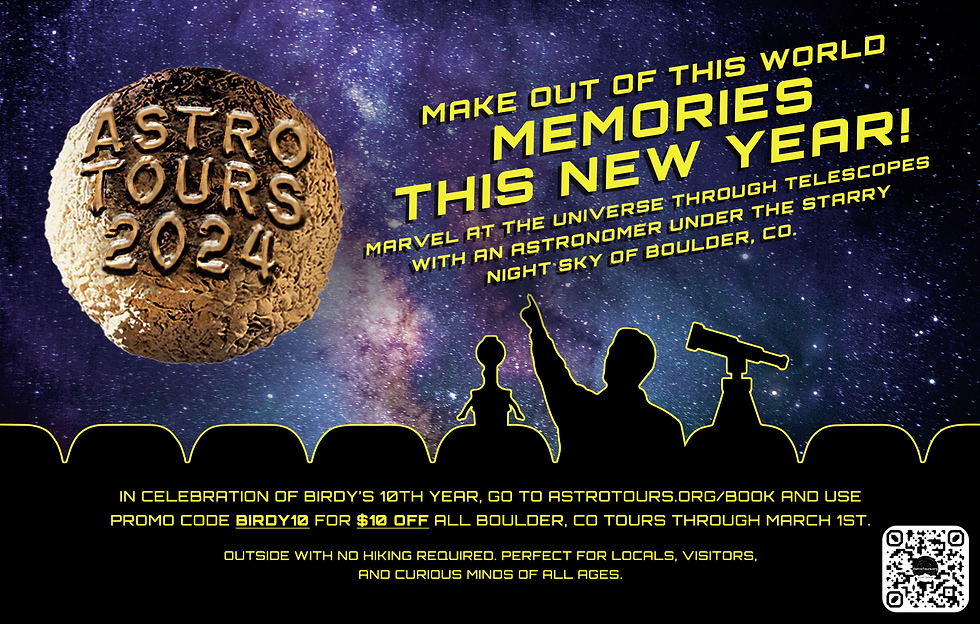This year, Birdy Magazine, Colorado's leading arts, comedy, and culture publication, marks its 10th anniversary, and AstroTours.org is joining the celebration! We're partnering with Birdy to offer an exclusive $10 discount to their readers, making our astronomy programs more accessible to the Denver and Boulder communities.

Birdy Magazine has been a beacon of creativity and expression, featuring an array of talented artists, writers, and comics. As they commemorate a decade of incredible content, we're excited to align with their commitment to art and culture.
Our collaboration with Birdy Magazine is more than just a partnership – it's a celebration of a shared journey. Our founder, Luke, has a special connection with Birdy, having discovered this gem while working at the market on Larimer Square during his college days. The magazine's vibrant art and creative spirit left a lasting impression. AstroTours.org is thrilled to be a part of this milestone celebration and to support Birdy with advertising.
How to Avail the Offer: To grab this special discount, simply pick up a copy of Birdy Magazine at your nearest coffee shop in Denver. You'll find an AstroTours.org advertisement inside, containing the exclusive promo code. Birdy is a free art magazine that's not just informative but also a visual treat, showcasing art pieces you'll want to frame and hang on your wall.
About the AstroTours Experience: AstroTours.org is dedicated to bringing the universe closer to you. Our regular programs in Denver and Boulder are perfect for anyone curious about the cosmos. Under the guidance of professional astronomers, you'll journey through the stars and beyond, using high-powered telescopes. It's an enchanting experience for all ages.
We hold our events at City Park in Denver every Wednesday and on the outskirts of Boulder every Sunday, Monday, Thursday, and alternating Fridays and Saturdays. Starting at sunset, each session lasts for two hours, offering a deep dive into the celestial wonders.
Event Timing:
January: Starting at 5:30 p.m.
February: Starting at 6:00 p.m.
Booking and Pricing: Regular adult tickets are priced at $40, but with the Birdy Magazine discount, you can enjoy a $10 reduction. To book your astronomical adventure, visit AstroTours.org. Remember, pre-booking is required to ensure availability.
AstroTours.org understands that financial constraints shouldn't limit access to learning and enjoying astronomy. If you're facing financial challenges, reach out to us – we're more than happy to make accommodations.
As Birdy Magazine embarks on its next decade of inspiring and showcasing creativity, we're proud to support and be a part of their journey. So grab your copy of Birdy, find our ad, and join us for a night under the stars.
Don't miss this unique opportunity to celebrate Birdy Magazine's 10th anniversary with AstroTours.org. Clear skies and new discoveries await!
Happy Stargazing!

.png)












